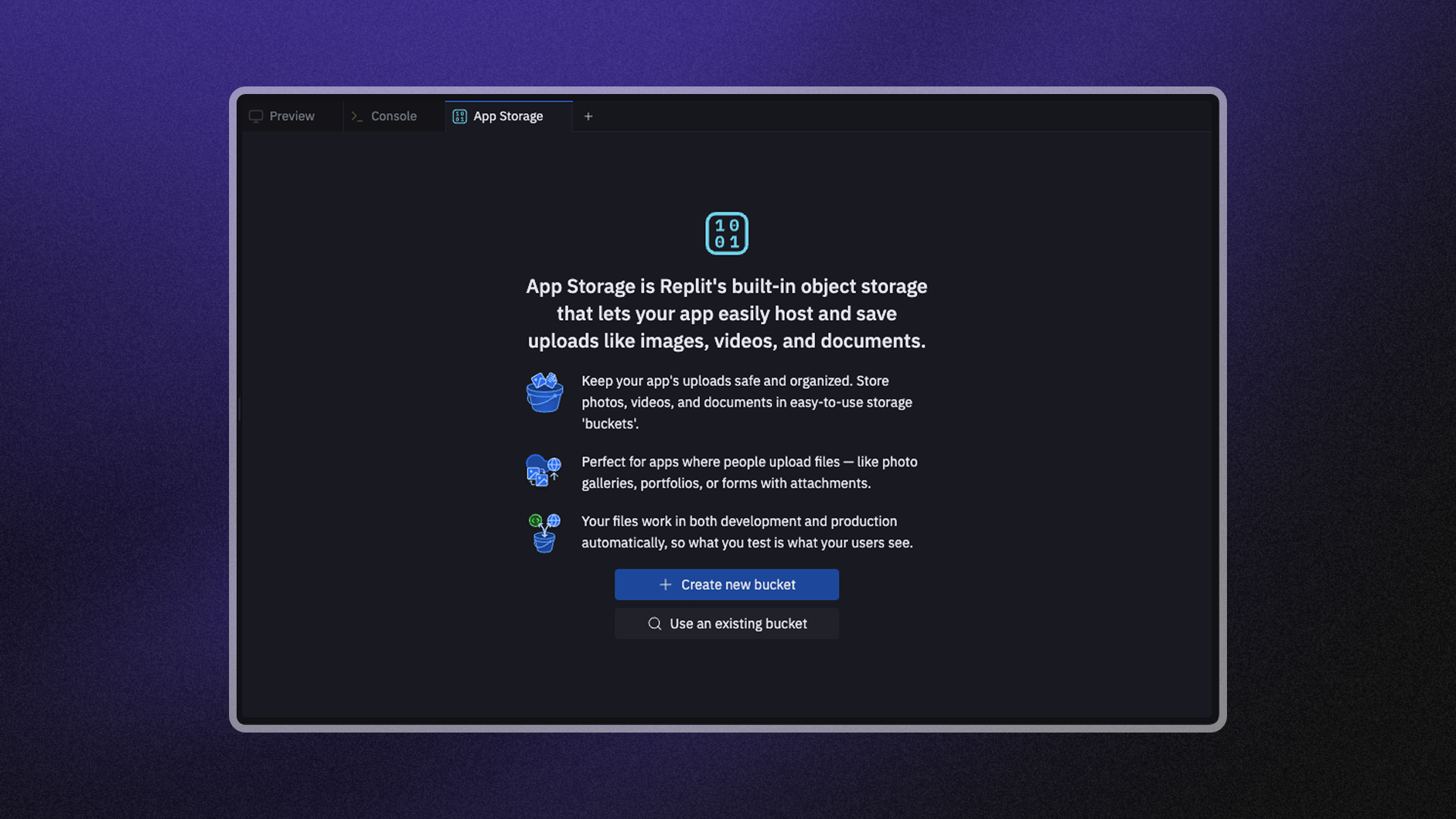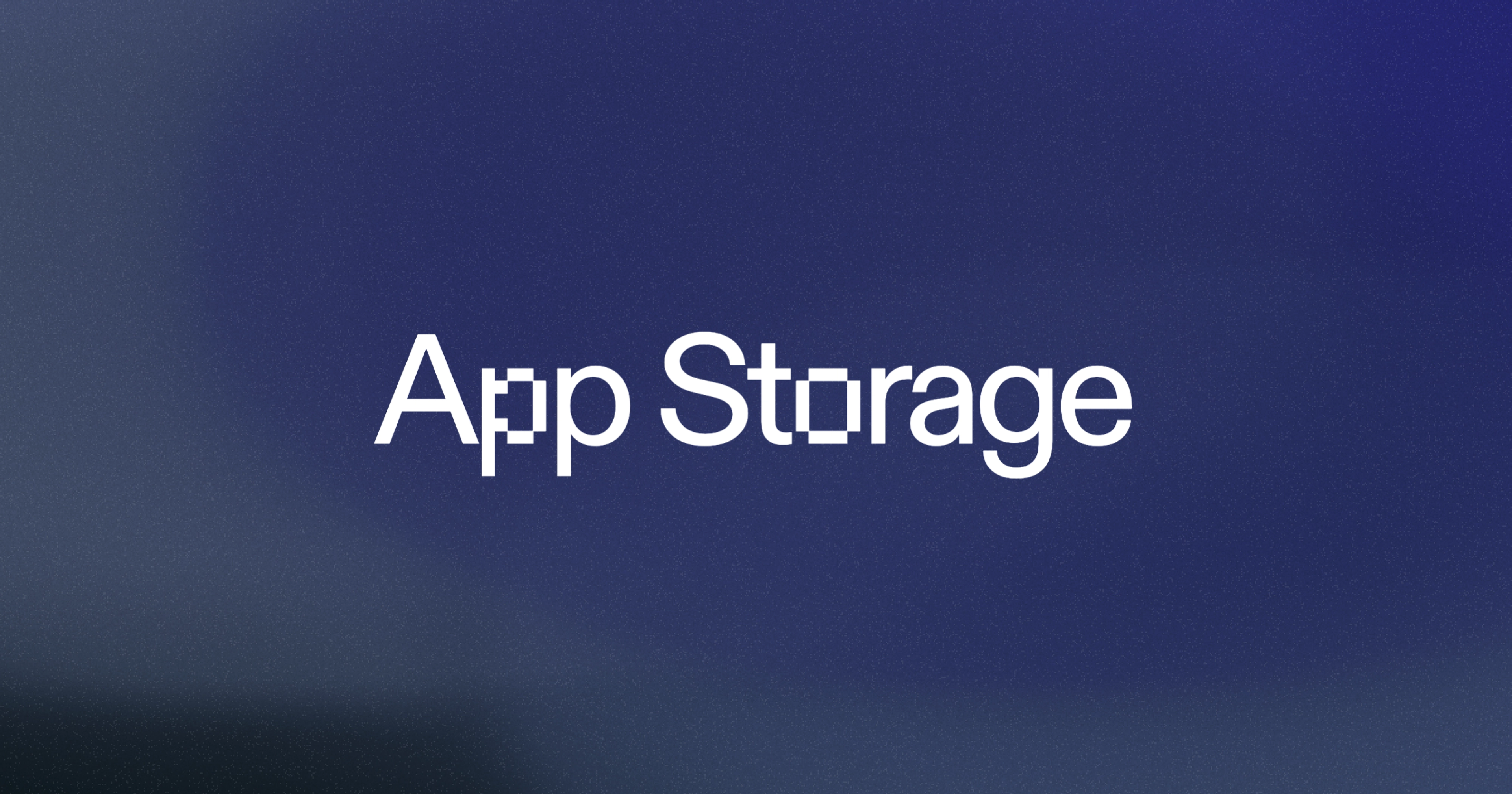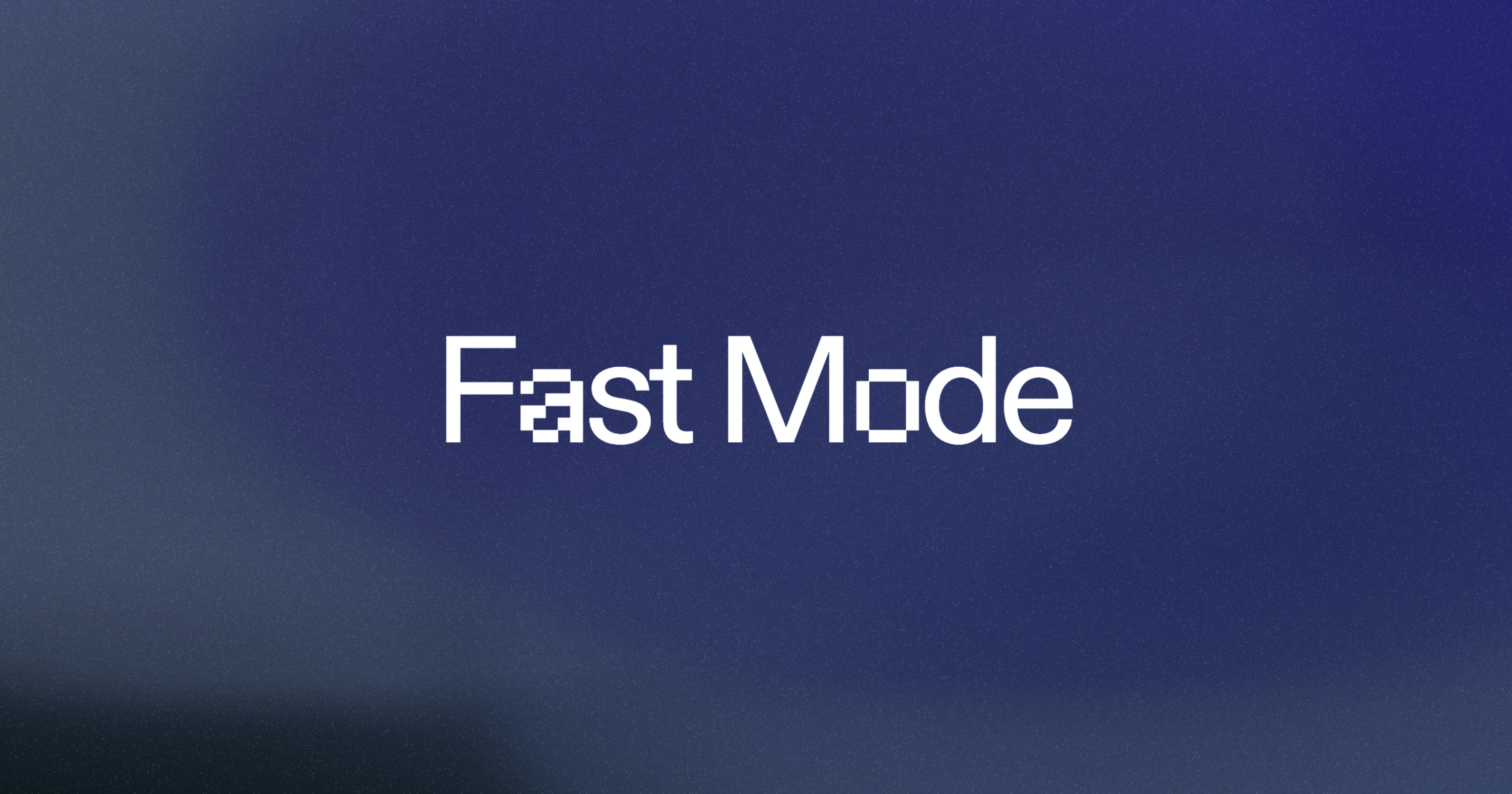Introducing App Storage – building apps with images, video, and PDFs just got easier
Today we're excited to announce App Storage, Replit's built-in object storage solution. App Storage simplifies hosting and saving uploads such as images, videos, and documents directly within your application. While object storage was released last year, we've renamed it to App Storage to highlight Agent's new capability for seamless setup.

What you get with App Storage
- Robust storage for your Agent-built apps — store large files like images, videos, and documents.
- Auth + Database connected: per‑user permissions and a database table for file details (owner, type, size), ready to reference from your app’s entities.
- Logical defaults for permissions so the right users can access the right files.
- Scaffolded UI flows you can keep or customize.
What you can build with App Storage
Perfect for apps that handle large files — images, video, PDFs, audio, and other assets. Try these requests:
- “I need a client portal where customers can upload project files.”
- “Build a recipe app where logged‑in users can share photos and ingredients.”
- “Create a student assignment system with file submissions, grading, and student registration.”
- “I want a private team workspace for sharing documents and presentations.”
- “We need a place to store website images privately—set up App Storage for me.”
As with any app you build, Agent handles the entire stack—design, database, authentication, code generation, etc. Now, Agent is even more intelligent about how to make it work with App Storage — all from describing what you want. Here are even more ideas:
Business apps
- Document management system — PDF storage with search indexing and version control
- Ecommerce platform — Product image storage with multiple size variants and CDN integration
- Corporate intranet — Employee document sharing with access controls and audit trails
Content creation & media
- Photo sharing app—image storage with thumbnail generation and gallery views
- Podcast hosting—audio storage with metadata management and streaming endpoints
- Digital art marketplace — High-resolution image storage with watermarking and download controls
Professional apps
- Online course platform — Video lecture storage with chapter markers and subtitle files
- Research collaboration tool — Large dataset storage with sharing permissions and download tracking
- Language learning app — Audio pronunciation files with playback controls and progress tracking
How to upload files onto App Storage
1) Through your app’s UI (recommended for end users)
Agent scaffolds the upload flow and permissions for you. Under the hood, your app uses Replit's App Storage SDK to put files into storage — see the JavaScript SDK and Python SDK.
2) Directly in your Workspace (for admins/builders)
- Open the App Storage tool: You can access the App Storage tool directly in your Replit App workspace.
- Upload files/folders to a bucket: To upload an object to the selected bucket.
What is a bucket?
A bucket is the top‑level container in App Storage. It holds your files (“objects”) and organizes them by an object key (a path‑like name).
- Objects live inside a single bucket and are addressed by their key (for example: private/user/123/profile.png).
- Buckets have settings for permissions, lifecycle/retention, and optional versioning.
- Use prefixes (folder‑like key paths) to organize data: public/, private/user/{user_id}/, etc.
In App Storage, Agent provisions the bucket with sensible defaults; your app references files by their keys and stores metadata (owner, type, size) in the database.
What goes where? (Storage vs Database)
- App Storage (Object Storage): unstructured/binary files — images, videos, PDFs, audio, large assets (“store files like images, videos, and documents”) that the app you build hosts.
- Database: structured data and relationships — file details (owner, type, size), tags, references from app entities to file keys.
Transparency: usage and billing
- Monitor usage: To monitor your App Storage usage
(Usage dashboard: replit.com/usage) - Pricing: App Storage Billing
Why this is different
Without Agent, you’d manually create storage, set permissions, connect Auth/DB, and write upload code. With Agent, you describe the outcome and it sets it up — storage, permissions, Auth/DB connection, and working upload code — in one flow.
Get started
Start a new Replit app and tell Agent what you want to build.






